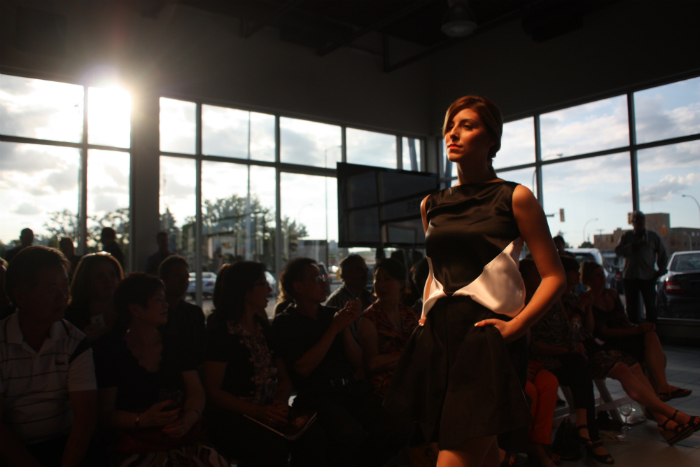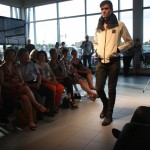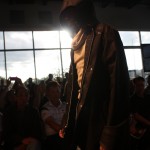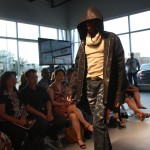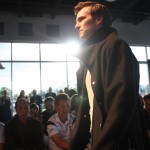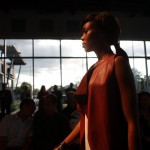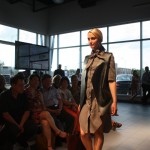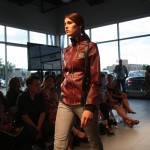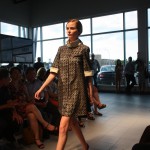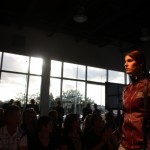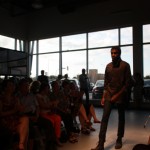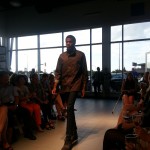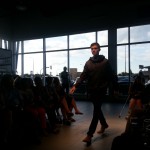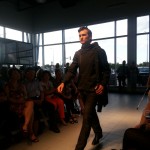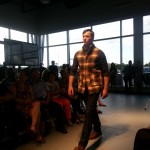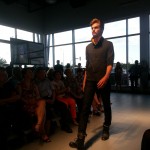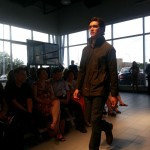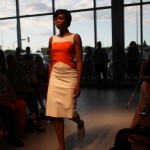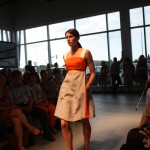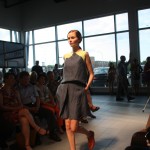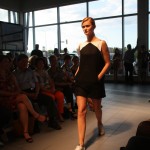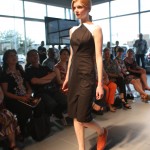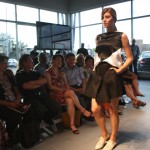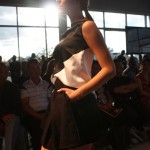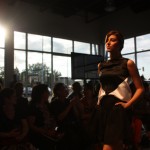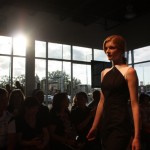“We wear clothes, cover ourselves in an outer skin of codes and creations, in order for us to be seen how we truly are,” an excerpt from Fashion and Art.
A homeless man rummaged through a bag of second-hand clothes at a downtown Winnipeg shelter, looking for something particular, it seemed.
“Do you have any sweaters?”
“Only in blue.”
“I don’t wear blue. It’s a cop colour.”
Preferences, and the fact we all have them, is an uninteresting phenomenon, save for its application to fashion. We should all appreciate this art form. It is what gives us jeans over dress pants, button-ups over t-shirts; choice, escape, fantasy.
“It’s an art form and that’s why I like doing it. It gives art a practical expression. It uplifts people, allows people to fantasize, to escape,” Eliza Faulkner said.
This is the profile of a designer, with elements of fashion-industry apologetics. How does one cover a fashion show for the first time and not report or pay homage to aesthetics, art, and the fact that this medium is one we all participate in one level or another?
Fashion shows are an interesting animal, where honest, genuine lovers of their craft – designers – play in what is often criticized as the vapid, superficial, narcissistic arena of style.
“The birth of fashion as a discrete idea beyond the expedients of mere clothing or dress is coterminous with a philosophical self-consciousness of appearance,” a introductory, stage-setting comment written by the editors of Fashion and Art. “To have style is to possess a differentiating and assumedly enviable abstract, that is, impalpable quality. Yet for something to be stylized is to be rigid and fake to the point of repellent because of its lack of naturalness.”
They all had angular, steely faces, the models did. They usually do. They were slim and were wearing clothing made to fit their frames, not mine or most others in attendance. This was expected. It was haute couture, high fashion, emerging and fully emerged talent. And it was fascinating.
The third annual Mercedes-Benz Start Up semi-finals runway show took place at a dealership on the corner of Portage Avenue and Moray Street Tuesday. Three designers, two from Winnipeg and one from Vancouver, showed their collections to a large audience and a panel of judges, vying for an opportunity to compete at the World MasterCard Fashion Week in Toronto for a year’s worth of industry mentorship, design, and business support.
These start-up fashion competitions are set up in different cities to give opportunity to as many people as possible. Anyone from anywhere in Canada can submit, explaining why a Vancouver-based designer was in the running.
Lennard Taylor’s collection, mostly denim and leather, smacked of fun, creativity, and wearable complexity. He had fans in attendance, audibly. His collection walked by quickly.

Shelley Ediger’s was dark and sophisticated, and was over as quickly as Taylor’s.

The orange in Eliza Faulkner’s collection stood out, especially over the darker tones that came before.
“It is my summer collection, inspired by West Coast athleticism, colours and shapes,” she said.

The judges, one of which was Michael Silver of Silver Jeans, conferred.
Faulkner won. The whole event, from sit down to announcement, took twenty minutes.
She was walking near the Human Rights Museum when Spectator Tribune reached her.
“I’m glad I came; it’s a beautiful city. The architecture is great. You don’t get that in B.C.,” Faulkner said.
The in-flight magazine she read en route featured a spread on Winnipeg, including some restaurant mentions, one of which was Deer + Almond, where she ate dinner Monday.
“It was great,” she said. We had to ask.
Faulkner started her fashion business a year and half ago in Vancouver and, without an online shop, has begun receiving clothing orders via email, a noticeable increase in demand for her designs, and a momentum she is grateful for.
She studied at Central Saint Martins College of Arts and Design in London, England, where she hopes to return, as a fashion designer. That is, after she experiences the full potential of her newly won opportunity: “The guidance and support from Mercedes-Benz, and the same from the head of Toronto Fashion Week would be very helpful.”
Toronto Fashion Week means exposure to a larger marketplace for Faulkner and exposure to the eastern side of North America, an opportunity she now has, winning the finals or not.
Mercedes-Benz hosted semi-finals in Calgary, Laval, and Winnipeg, and will determine the last finalist in Kitchener.
“Designing is always something I have done,” Faulkner said. “I always knew I would do it. London reiterated that. It feels like I have been doing it forever. And that it is something I have to do.”
The words of an artist, no doubt. And sentiments I’m sure shared by Taylor and Edigar. The industry may constantly battle the stigma of vanity, but at its centre, where Faulkner, Taylor, and Edigar interact with it, it is art.
“As fashion seeks to attach itself to the value of art, so art seeks to remove the stigma of such associations.” – Fashion historian Alice Mackrell in Art and Fashion

___
All photos by Toban Dyck.
